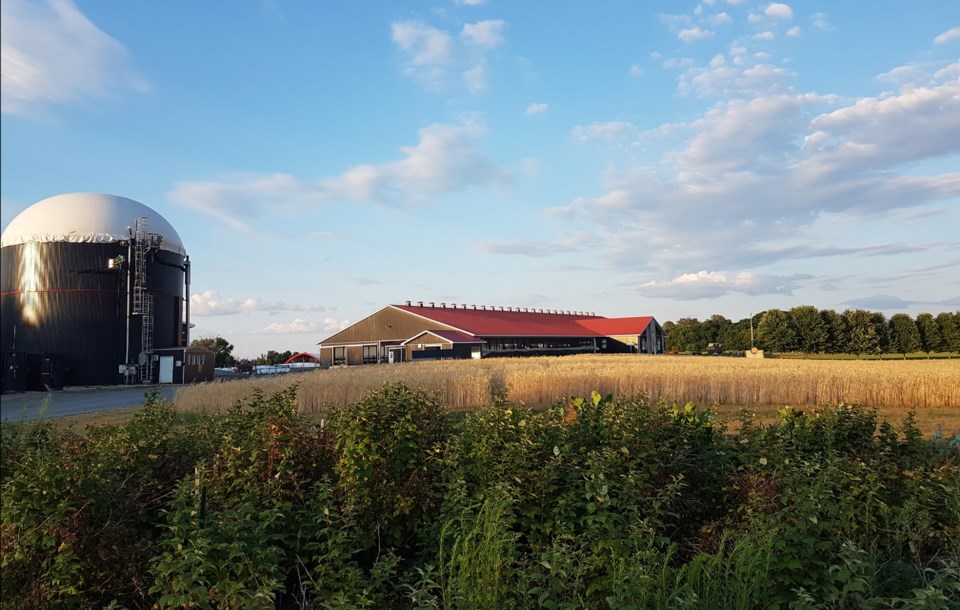With more than 40 per cent of farm operators set to retire in the next decade, Canada with a country-wide shortage, a recent report suggests.
A collaboration between the Royal Bank of Canada, BCG Centre for Canada’s Future and Arrell Food Institute at the University of Guelph, the report notes Canada will be short 24,000 general farm, nursery and greenhouse operators by 2033.
It is estimated that 66 per cent of producers do not have a succession plan in place, leaving the future of farmland in doubt.
“This isn’t a surprising statistic to most people involved in farming. They are aware,” said Peggy Brekveld, president of the Ontario Federation of Agriculture.
“Part of it is the nature of farming. You often see multi-generations on a farm. Often the oldest generation is having to stay longer.”
To address the shortage and lack of succession plans, the report says Canada will need to accept 30,000 permanent immigrants by 2033 to take over existing farms and greenhouses or to establish their own.
According to the report, a rapidly approaching demographics crisis is set to make the problem worse.
In 10 years, 60 per cent of today’s farm operators will be over the age of 65. In addition, the number of operators below the age of 55 has declined by 54 per cent since 2001.
Many farms and greenhouses are already looking to other countries to address the need for low-skilled labour.
According to the report, when it comes to more highly skilled farm operators, Canada has always welcomed immigrants from countries such as the Netherlands, China, United States, United Kingdom and India.
Providing permanent immigration status to over 24,000 general farm workers and 30,000 operators can assist in bridging retirement and staffing gaps, help the sector fulfill its productivity potential, and meet domestic and foreign food demands.
"I think some of the gap can be managed by immigration. This is something that we definitely have to consider and that we have already been considering. We’ve seen immigration in the past come into agricultural communities and I think that will happen again," Brekveld said.
"We do know that we are short of a farming workforce. But there are so many opportunities in farming."
The report highlights a three-point plan for growth:
- Increase immigration of farm operators by 30,000 over the next decade.
- Promote agricultural education across colleges and universities to attract new students.
- Accelerate the adoption of autonomous and mechanized solutions on farms.
The report suggests Canada’s agricultural workforce needs to evolve to include skills like data analytics and climate-smart practices to enable the growth of more food with fewer emissions.
It also recommends Canada build a new pipeline of domestic operators and workers by bolstering agriculture education and increasing spending on automation, which can support existing farms in becoming more efficient, making Canada a global leader in low carbon and sustainable food production.
Brekveld says much of the shortage can be managed by innovative technologies.
“We may not need as many people on the farm. And we do know that as an industry, many are working to help with succession planning and that might even include planning succession planning that isn’t inside of the family,” Brekveld said.
With declining enrolment in the 1990s, agricultural schools began to offer cross-disciplinary courses to attract more students with a focus on topics outside agricultural science, from food security to international development.
The report says smart agriculture technology and practices can promote higher levels of efficiency, increase productivity, limit environmental impact, and promote sustainability.
“There are many ways to get involved in agriculture and farming. If you are in an accounting program, there are jobs for you in rural Ontario in farming. If you are in human resources, there are jobs in farming and greenhouses and on some of the larger farms,” Brekveld said.
“And for those in computer sciences, we desperately need people who are comfortable working with the technologies that we are implementing on our farms now.”
By increasing the immigration of skilled farmers, encouraging colleges and universities to bring students of all backgrounds into the sector, the report says that by investing in innovative solutions to automate and reduce on-farm labour, Canada can lead the world into a new era of low carbon farming.
“Not everyone might want to own a farm, but there is a lot of room for people to come in, work and be a part of the farming sector,” Brekveld said.
“There are many opportunities in Ontario and in Canada for people to farm.”
For more information, visit here.



